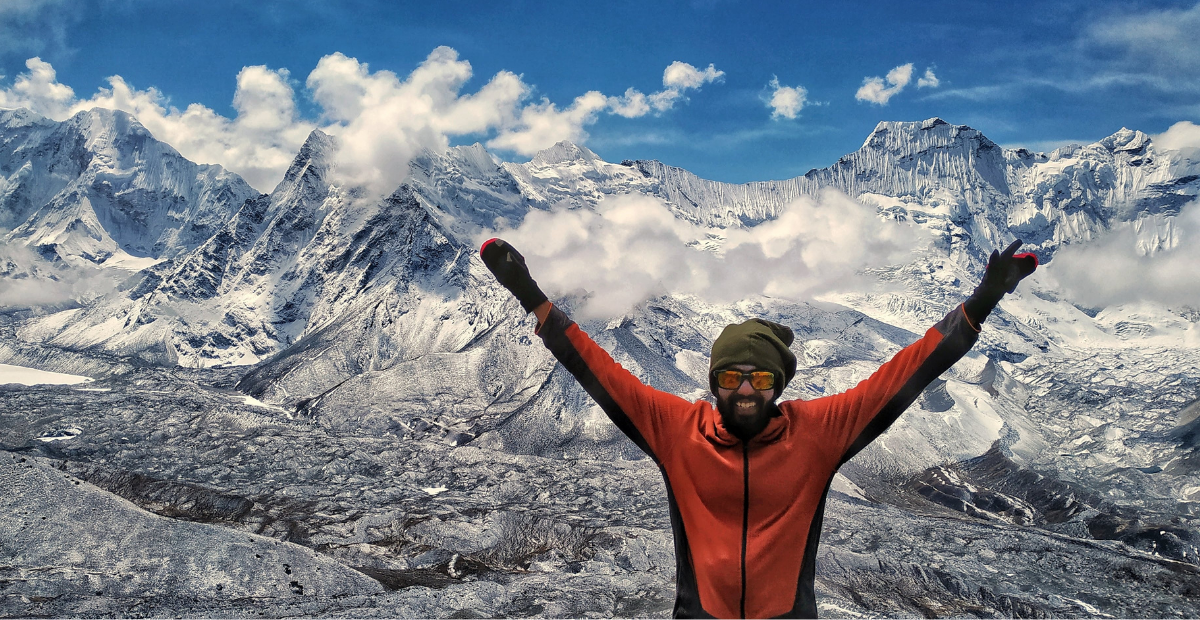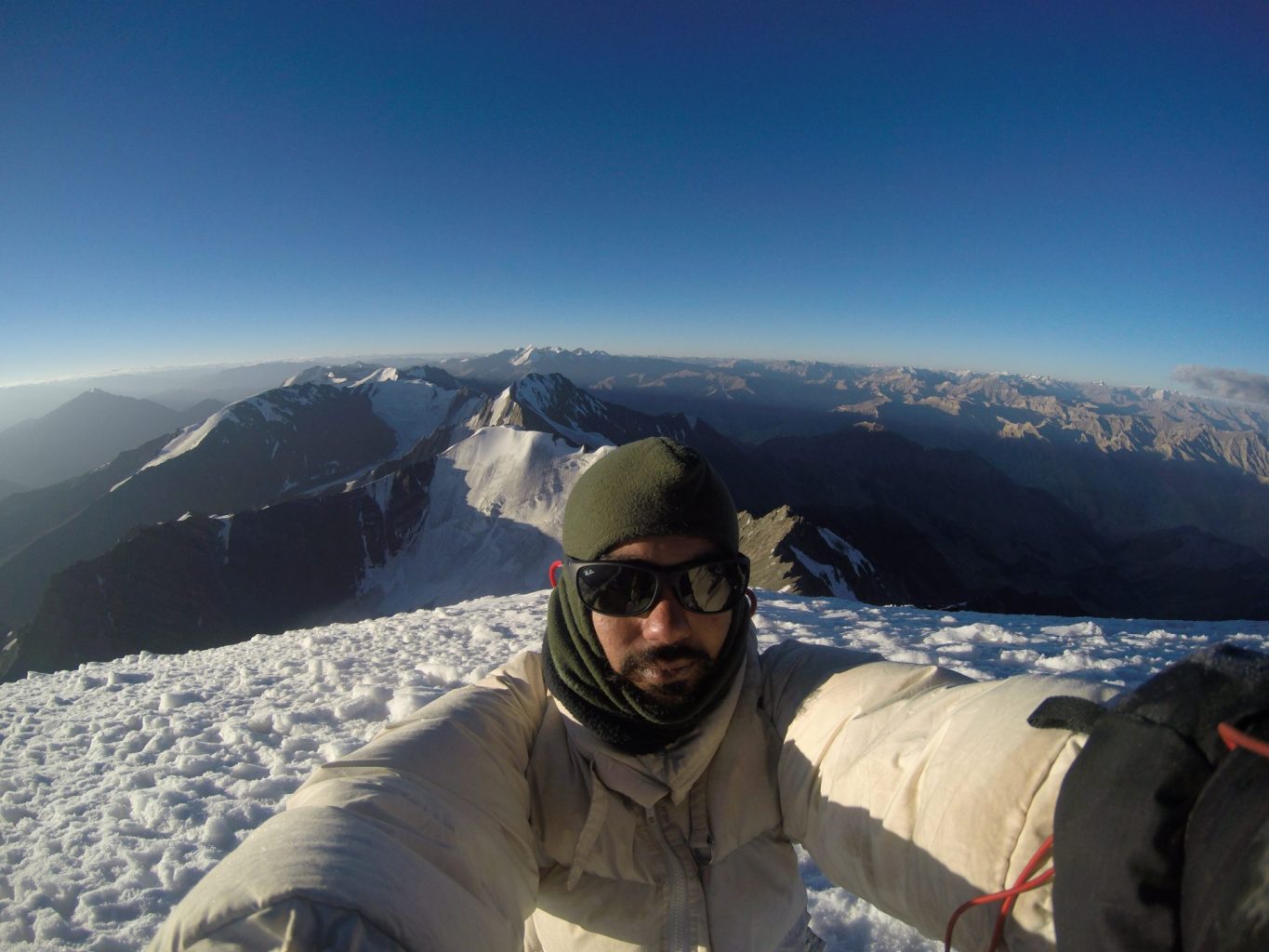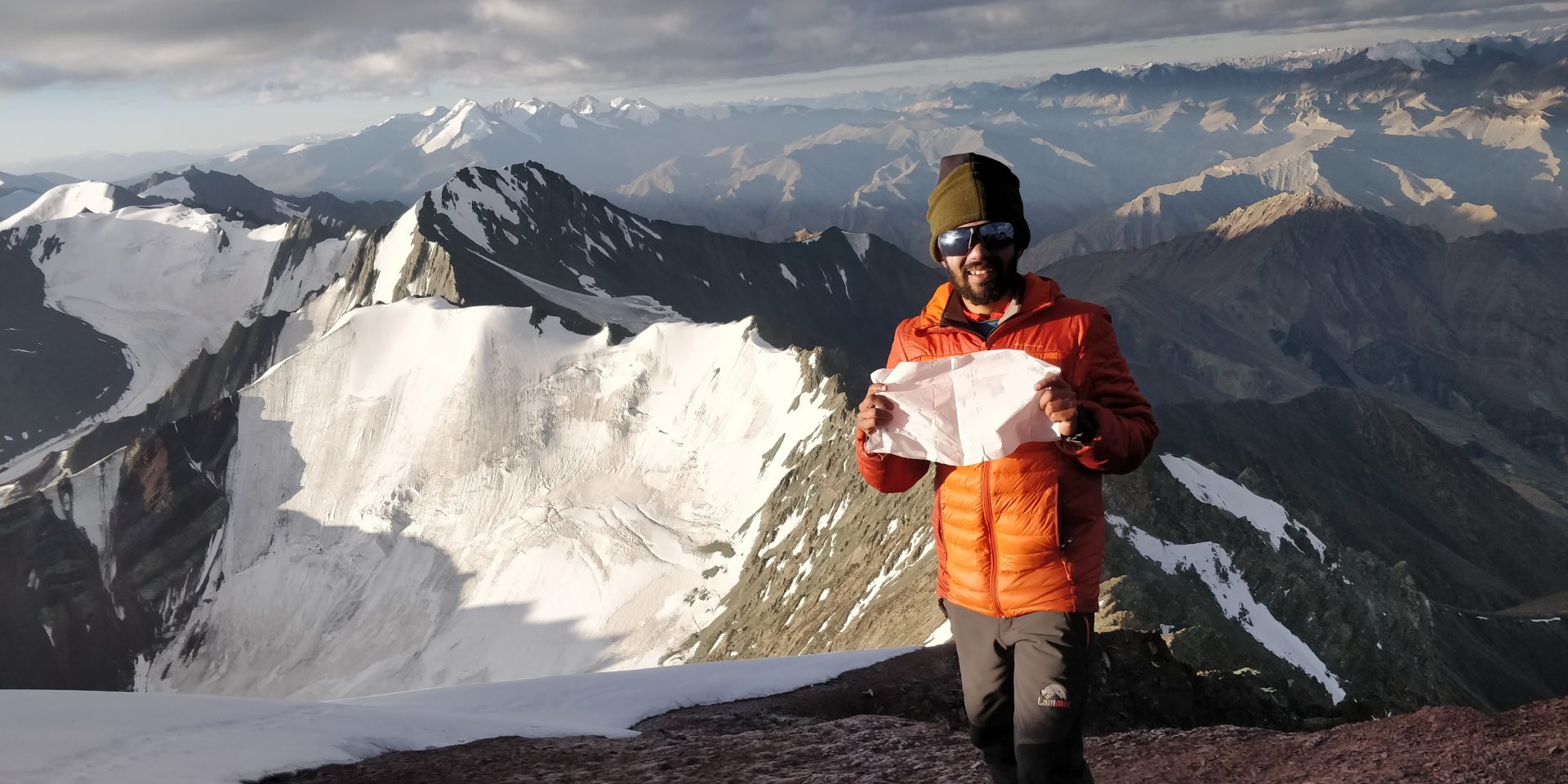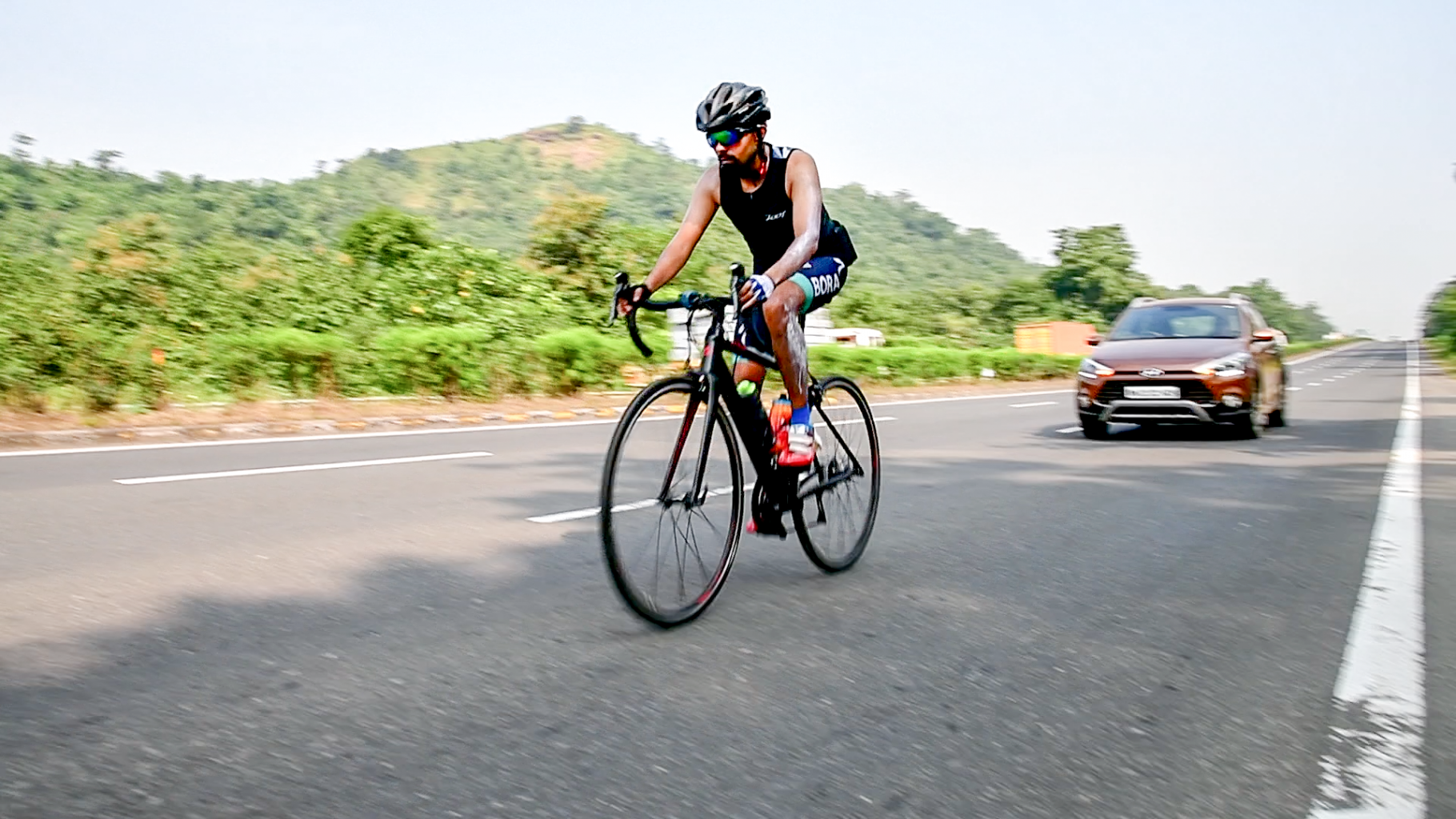Fitness & Wellness
Harshvardhan Joshi's Sangharsh - From Vasai to climbing Mount Everest

Mountaineering is an endurance sport that is low intensity but high in volume. Proper cardiovascular conditioning, bodyweight strength and patience are some of the prerequisites to professional mountaineering that every aspirant develops through experience. However, this sport much like any other saw a halt due to the lockdown.
However, a pandemic was not going to stop Harshvardhan Joshi. In conversation with The Bridge, he spoke about his journey in mountaineering that began as a curiosity for the outdoors and running a self organized Ironman triathlon, to his current endeavour to scale Mount Everest.
Born in Vasai, Palghar, Harshvardhan was invested in academics and video games in his school years and is an IT engineer by academic standards. However, his first outdoor experience to a local hike in 2011 changed his perspective and got him curious about the outdoors. This blossomed into a passion for mountaineering and led him to make the decision in 2015 – to climb Mount Everest one day.
After completing a basic mountaineering course, Harshvardhan went on to scale Mount Stok Kangri unsupported and solo, making him the youngest person then to achieve this feat at the age of 20. He went on to gain advanced certifications in mountaineering and skiing, and climbed 11 summits that were at an altitude of 6000m.
 Harshvardhan went on to scale Mount Stok Kangri unsupported and solo, making him the youngest Indian then to achieve this feat at the age of 20. (Source: Harshvardhan Joshi/Instagram)
Harshvardhan went on to scale Mount Stok Kangri unsupported and solo, making him the youngest Indian then to achieve this feat at the age of 20. (Source: Harshvardhan Joshi/Instagram)
In order to take his passion to the next level, Harshvardhan moved to Ladakh in 2018 and worked in impact tourism and as a mountain guide. Though being a mountain guide may seem like the right career choice filled with adventure and staying close to nature, it may not be a wise choice financially. “Mountaineers choose this career as they are driven by the passion for it. You may have to invest a lot but might not recover it. I love mountaineering as it is my passion”, he said. Alex Honnold, a free solo climber came into the news in recent years for scaling El Capitan in California completely unassisted. Though he may have received fame, he still chooses to live in a van despite having bought a home.
Speaking of the solo climber, Harshvardhan also mentioned how mountaineering is not simply a physical feat. An endurance sport requires patience and the ability to endure weather and altitudes for long periods. Though initially having a fear of heights himself, mountaineering taught Harshvardhan to confront fears. “When you start running towards fear, it runs away from you”. Conquering this mental barrier was one among the many things that mountaineering taught him.
 Being into sustainable development and experiential travel, Harshvardhan has an understanding of how solar energy is sustainable and economically efficient. (Source: Harshvardhan Joshi/Instagram)
Being into sustainable development and experiential travel, Harshvardhan has an understanding of how solar energy is sustainable and economically efficient. (Source: Harshvardhan Joshi/Instagram)
He finally set his sights on Everest, even making sure that all his equipment worked at an altitude of 7,000m and set up a platform ‘Sangharsh’, derived from part of his name. Sangharsh is a Sanskrit word for ‘conquest’, a word summarizing Harshvardhan’s journey from a curious boy exploring Vasai outdoors to becoming one of the successful people to reach the Mount Everest summit. However, he wanted to dedicate this journey to a cause larger than himself, which was a big part of many expeditions – solar energy. Being into sustainable development and experiential travel, Harshvardhan has an understanding of how solar energy is sustainable and economically efficient. He also aimed to carry solar panels on the Mount Everest climb to power all electricity devices.
However, the coronavirus pandemic put the world to a standstill, shifting many functions to virtual. Sports took a hit, and so did Harshvardhan’s Everest journey saw a delay on March 15th, until 2021. During the lockdown period, he chose not to keep still and instead shifted his focus temporarily to the Ironman triathlon.
Restarting running after a 90 day hiatus, Harshvardhan got a bike in July and started training in cycling and running. Though pools are yet to open in many parts of the country, a friend helped him train at his home pool in September. The Ironman 70.3 triathlon in Goa was called off in March, but he decided to organize his own self paced triathlon. He called his coach; an Ironman certified instructor based in California and notified him of the decision to organize a self paced half Ironman. Having been through the same shoes as Harshvardhan, beating a chain-smoking addiction to becoming the fastest Indian at Louisville 2016, his coach asked him for two weeks of dedicated training to prepare him for the challenge.
Harshvardhan decided to take advantage of training at a local 4km lake in Vasai, having a fisherman on a kayak at a distance of 10-15 feet, and wearing a buoyancy device to ensure safety. Having witnessed loss of a few known people in open waters, he wanted to make sure that no matter how experienced he was in open water swimming, letting his ego get the best of him would not be a wise decision. His coach motivated him throughout the process and told him to set realistic expectations, treating it as a long training session than an event. The day of the event came where brick workouts, a structured nutrition and exercise plan came in hand. He began the first leg of his Ironman bout at 6:20am, swimming for 1.9km in 1:09:00, cycling 90.06km in 3:30:56 and finally running 21.11km in 2:43:13, thus finishing a long journey that ended at 2:14pm.
Throughout all legs, his friends, journalists and coach tracked him live through his fitness wear and tracking devices which encouraged him to push till the end. Though the end did not make him an official Ironman triathlete, it helped him spread a message that despite not having an athletic background, or being genetically gifted, he could accomplish the 70.3 race, motivating many others to push their physical limits with consistent training and taking care of their body.
 Throughout all legs, his friends, journalists and coach tracked him live through his fitness wear and tracking devices which encouraged him to push till the end. (Source: Harshvardhan Joshi/Instagram)
Throughout all legs, his friends, journalists and coach tracked him live through his fitness wear and tracking devices which encouraged him to push till the end. (Source: Harshvardhan Joshi/Instagram)
Harshvardhan credits some of his Ironman success to mountaineering experience, having physically and mentally conditioned him for this event. Functional fitness and muscular endurance was the target of his training routine. He believes that training core and functional exercises that can help in everyday movement will help one become fitter for the future.
Though now postponed, Harshvardhan looks forward to 2021 to reach the summit of the world. Local guides known as Sherpas help out Everest aspirants with ropes, ladders and other precautionary measures to ensure a safe trip. According to local laws, Sherpas and guides are a must for anyone who wishes to climb Mount Everest. Though there remain over 6 months before he can summit the behemoth, Harshvardhan spreads awareness for his vision to improve economic and natural sustenance on Sangharsh, which also features a timeline of his mountaineering journey.
Also read: Mountaineering: Meet Premlata Agrawal, the first Indian to conquer seven highest world peaks






